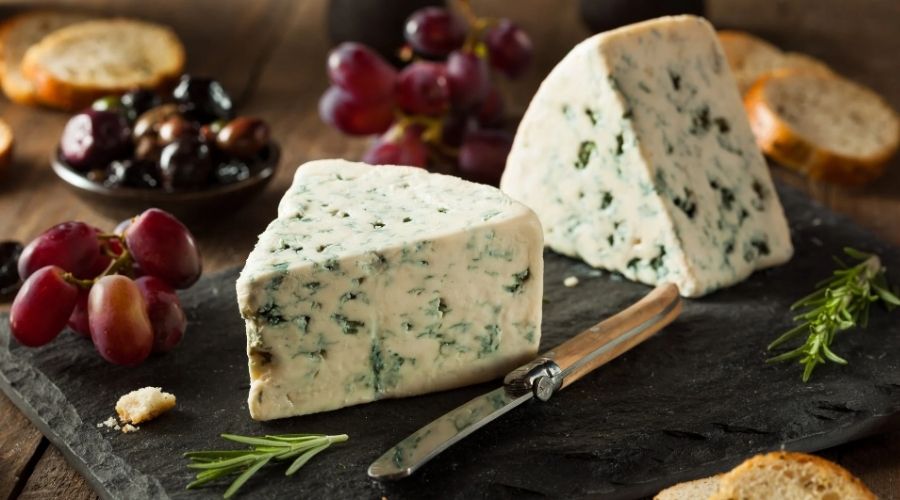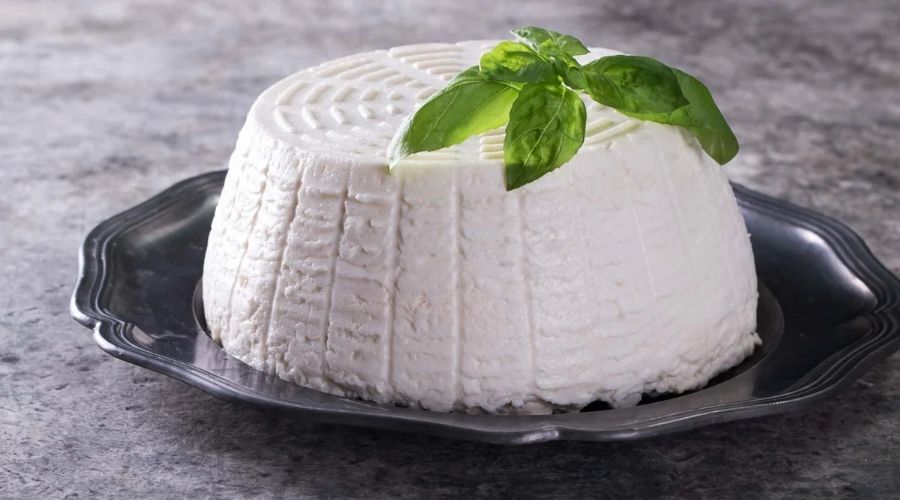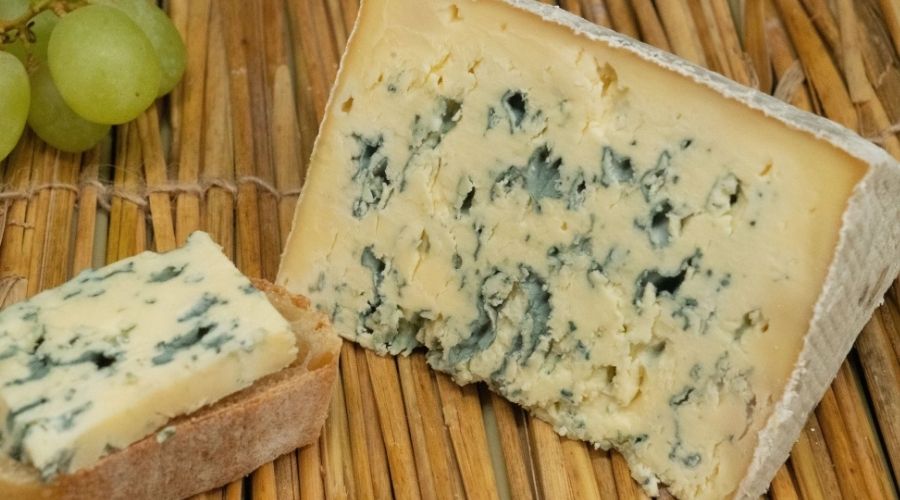Dolcelatte cheese, a beloved Italian blue cheese known for its creamy texture and mild, tangy flavor, can elevate a variety of dishes from savory sauces to elegant cheese boards.
However, there are times when dolcelatte may not be available or suitable for your recipe.
Whether you’re dealing with dietary restrictions, lack of access to specialty cheeses, or simply want to experiment with different flavors, finding the right substitute can be a game-changer.
In this article, we explore over a dozen viable dolcelatte cheese substitutes that can seamlessly replace this cheese in your recipes.
From other blue cheeses to creamy alternatives, we’ll guide you through each option, explaining how to use them effectively and what adjustments might be necessary to achieve the best results in your cooking.
12 Delicious Dolcelatte Cheese Substitutes for Your Cooking Needs
Finding a substitute for dolcelatte cheese can open up a world of culinary possibilities while accommodating your specific needs or preferences.
Whether you’re looking for a blue cheese with a similar tangy bite, a creamy alternative that mimics the texture, or even a non-dairy option, there are plenty of choices available.
Each substitute offers unique characteristics that can enhance your dishes in different ways, from adding a robust flavor to providing a smooth, creamy consistency.
Gorgonzola Cheese
Gorgonzola cheese is a suitable substitute for dolcelatte due to its similar blue cheese profile.
Both cheeses share a creamy texture and a tangy, slightly sharp flavor that can enhance a variety of dishes.
Gorgonzola is especially effective in recipes where the blue cheese’s robust taste is needed, such as in salads, dressings, or sauces.
While it can mimic the creaminess of dolcelatte, be cautious with the amount used, as gorgonzola can have a more intense flavor.
Adjust quantities based on your preference to ensure it complements rather than overwhelms your dish.
Roquefort Cheese

Roquefort cheese, another blue cheese, can serve as a substitute for dolcelatte due to its similar creamy and tangy characteristics.
Roquefort offers a robust and complex flavor that can replicate the richness of dolcelatte in recipes like risottos, pasta dishes, or cheese spreads.
However, Roquefort is known for its stronger, more pungent taste compared to dolcelatte.
When using Roquefort as a substitute, start with a smaller amount and adjust according to taste to avoid overpowering your dish.
Also Read: 12+ Guindilla Pepper Substitutes for Delicious and Spicy Dishes! – My Blog
Brie Cheese
Brie cheese can act as a mild alternative to dolcelatte, particularly in dishes where the creamy texture is the main focus rather than the strong blue cheese flavor.
While brie lacks the blue cheese’s tanginess, its smooth, buttery consistency can be a good match for recipes such as creamy sauces, baked dishes, or cheeseboards.
Be aware that brie will not replicate the distinct flavor of dolcelatte, so it works best in recipes where the cheese’s texture is more important than its specific taste.
Adjust seasoning to make up for the loss of tanginess.
Mascarpone Cheese
Mascarpone cheese, with its rich, creamy texture and mild flavor, can substitute for dolcelatte in recipes that require a smooth, luscious cheese but do not specifically need the blue cheese’s tang.
It is ideal for desserts, creamy sauces, or spreads where dolcelatte’s strong flavor is not necessary.
Mascarpone will provide the creamy consistency that dolcelatte offers but without the blue cheese notes.
Since mascarpone is milder, you may need to add additional seasonings or flavorings to achieve a more complex taste profile in your dishes.
Camembert Cheese
Camembert cheese is a good substitute for dolcelatte due to its creamy texture and delicate flavor, though it lacks the blue cheese notes of dolcelatte.
It can be used in recipes where the rich, smooth consistency is important, such as in baked dishes, creamy sauces, or cheese spreads.
Camembert’s mild flavor allows it to blend well with other ingredients without overpowering them.
Be aware that Camembert will not provide the tangy bite of dolcelatte, so it’s best used in recipes where a subtler cheese flavor is acceptable.
Also Read: 12+ Creative Substitutes for Cottage Cheese and Heavy Cream for Every Recipe
Feta Cheese
Feta cheese, with its crumbly texture and tangy flavor, can be a useful substitute for dolcelatte in dishes where the creamy richness is less critical.
Feta’s sharpness and saltiness can add a different but complementary flavor profile to salads, pasta dishes, and grain bowls.
While it won’t mimic dolcelatte’s creamy smoothness or its blue cheese tang, feta can still contribute a pleasant, zesty note to your recipe.
Adjust the quantity to balance the flavor and avoid overwhelming the other ingredients.
Ricotta Cheese

Ricotta cheese can serve as a substitute for dolcelatte in recipes that require a creamy texture but where the specific taste of blue cheese is not essential.
Ricotta’s mild, slightly sweet flavor and smooth consistency make it suitable for dishes like lasagna, stuffed pasta, or creamy dips.
While it won’t replicate dolcelatte’s tangy, blue cheese notes, it can provide the necessary creaminess and can be seasoned or mixed with other ingredients to enhance flavor.
Use ricotta in recipes where the cheese’s texture is more important than its specific taste profile.
American Blue Cheese
American blue cheese, such as Maytag blue or other domestic varieties, can be a good alternative to dolcelatte due to its similar blue cheese characteristics.
It offers a creamy texture and a tangy, sharp flavor that can replace dolcelatte in salads, dressings, or savory baked goods.
American blue cheese is often milder than traditional European blue cheeses, so it may be a better fit if you prefer a less intense flavor.
Adjust the amount used based on your taste preferences to ensure it provides the right balance in your dish.
Stilton Cheese
Stilton cheese is a suitable substitute for dolcelatte due to its rich, creamy texture and strong blue cheese flavor. It has a similar profile, making it a good replacement in recipes where the depth of flavor and creaminess of dolcelatte are desired.
Stilton works well in salads, sauces, and as a topping for savory dishes.
However, be aware that Stilton can be more pungent than dolcelatte, so you might need to adjust the quantity used to avoid overpowering the dish.
Its robust flavor makes it ideal for recipes where a pronounced blue cheese taste is welcome.
Also Read: 12+ Delicious Alternatives to Linguica Sausage for Your Favorite Dishes!
Maytag Blue Cheese
Maytag blue cheese is a high-quality American blue cheese known for its crumbly texture and sharp, tangy flavor. It can serve as an effective substitute for dolcelatte in recipes requiring a strong blue cheese presence.
Use Maytag blue cheese in dishes like dressings, spreads, or crumbled over salads and pasta.
Since it has a more intense flavor profile, start with smaller amounts and adjust according to taste to ensure it complements your dish without becoming overwhelming.
Bleu d’Auvergne

Bleu d’Auvergne is a French blue cheese with a creamy texture and bold, tangy flavor, making it a viable alternative to dolcelatte.
It shares some of the rich, smooth qualities of dolcelatte while offering a more pronounced blue cheese taste.
Bleu d’Auvergne is well-suited for use in sauces, salads, or as a cheese course.
As with other blue cheeses, its robust flavor might be more intense than dolcelatte, so use it judiciously and taste as you go to achieve the desired flavor balance in your recipe.
Neufchâtel Cheese
Neufchâtel cheese is a soft, creamy cheese that can be used as a substitute for dolcelatte in dishes where a mild, smooth texture is preferred.
While it lacks the distinctive blue cheese flavor, its creamy consistency makes it a good option for recipes like dips, spreads, and cheesecakes.
Neufchâtel is slightly less rich than dolcelatte, so you might need to adjust seasoning or add extra flavorings to achieve a comparable taste.
It’s ideal for recipes where the focus is on texture and creaminess rather than the specific flavor of blue cheese.
How to Make Dolcelatte Cheese Substitute at Home
Creating a dolcelatte cheese substitute at home is a great way to ensure you have a suitable replacement for recipes that require this creamy, tangy blue cheese.
Dolcelatte is known for its rich texture and distinct flavor, which can be challenging to replicate exactly.
However, by combining ingredients that provide creaminess and a touch of tanginess, you can create a delicious alternative that works well in a variety of dishes.
This homemade substitute uses readily available ingredients and provides a close approximation to dolcelatte’s unique characteristics, making it perfect for cooking, baking, or serving on cheese platters.
Ingredients:
- 1/2 cup cream cheese
- 1/4 cup sour cream
- 2 tablespoons blue cheese crumbles (or 1 tablespoon of blue cheese paste if available)
- 1/2 teaspoon lemon juice
- 1/4 teaspoon garlic powder (optional, for added depth)
Instructions:
- Combine Cream Cheese and Sour Cream: In a medium bowl, mix together 1/2 cup of cream cheese and 1/4 cup of sour cream. Use a spatula or spoon to blend them until smooth. This combination creates a creamy base similar to dolcelatte’s texture.
- Add Blue Cheese: Stir in 2 tablespoons of blue cheese crumbles or 1 tablespoon of blue cheese paste if available. The blue cheese will impart the tangy, distinctive flavor that mimics dolcelatte’s signature taste. Mix well until the blue cheese is evenly distributed.
- Incorporate Lemon Juice: Add 1/2 teaspoon of lemon juice to the mixture. This ingredient adds a subtle acidity that helps replicate the tangy quality of dolcelatte. Stir until the lemon juice is fully incorporated.
- Season (Optional): If desired, mix in 1/4 teaspoon of garlic powder for an additional layer of flavor. This step is optional and depends on your preference for extra depth in the substitute.
- Adjust Consistency and Flavor: Taste the mixture and adjust the seasoning as needed. If you prefer a stronger blue cheese flavor, add more blue cheese crumbles or paste. If the mixture is too thick, you can adjust the consistency with a little more sour cream.
- Chill and Use: Refrigerate the mixture for at least 30 minutes to allow the flavors to meld. Once chilled, the substitute is ready to be used in recipes where dolcelatte is called for.
Making a dolcelatte cheese substitute at home allows you to replicate the creamy texture and tangy flavor of this beloved cheese using simple ingredients.
By blending cream cheese with sour cream and adding blue cheese crumbles or paste, you create a versatile substitute that can be used in a variety of dishes.
Whether you’re preparing a savory sauce, a rich dip, or a flavorful dressing, this homemade substitute provides the necessary creaminess and tanginess to enhance your recipes.
The addition of lemon juice and optional garlic powder adds an extra layer of flavor, ensuring that your dish closely resembles the taste of dolcelatte.
Enjoy the convenience and satisfaction of having a ready-to-use cheese substitute that delivers on both texture and flavor, even when dolcelatte is unavailable.
1. What can I use as a substitute for dolcelatte cheese?
If you’re looking for a substitute for dolcelatte cheese, several options can work depending on your recipe.
Gorgonzola, Roquefort, and Stilton are all blue cheeses that can mimic dolcelatte’s creamy and tangy characteristics.
For a milder option, you can use Brie or mascarpone cheese, though these won’t replicate the blue cheese flavor.
Additionally, a homemade blend of cream cheese, sour cream, and blue cheese crumbles can also serve as an effective substitute, especially when you want to replicate both the texture and flavor of dolcelatte.
2. Can I use feta cheese instead of dolcelatte cheese?
Feta cheese can be used as a substitute for dolcelatte cheese in some recipes, though it offers a different flavor profile.
Feta is tangy and crumbly, lacking the creamy, smooth texture and distinct blue cheese notes of dolcelatte.
It’s best suited for dishes where the texture of dolcelatte is less critical, such as in salads or grain bowls.
If the recipe requires a strong blue cheese flavor, feta might not be the best choice, but it can still add a zesty touch to your dish.
3. How can I adjust the flavor of a dolcelatte substitute to better match the original cheese?
To better match the flavor of dolcelatte with a substitute, you can enhance the tanginess and creaminess of your chosen cheese.
For example, if using cream cheese as a base, mix in blue cheese crumbles or paste to add the distinct blue cheese flavor.
Adding a touch of lemon juice can mimic the slight acidity of dolcelatte.
Taste the mixture and adjust the quantities of blue cheese and lemon juice to achieve the closest match to dolcelatte’s flavor profile.
4. Is it possible to use a non-dairy substitute for dolcelatte cheese?
Yes, it is possible to use non-dairy substitutes for dolcelatte cheese, though the texture and flavor will differ.
Non-dairy cream cheese or cashew-based cheese can provide a creamy texture, and adding a bit of nutritional yeast or non-dairy blue cheese flavoring can help mimic dolcelatte’s taste.
For a more accurate substitution, look for vegan blue cheese options available in specialty stores.
Keep in mind that while these alternatives can work, they may not perfectly replicate the unique flavor and texture of dolcelatte.
5. How do I adjust the quantity of a dolcelatte substitute when cooking or baking?
When using a dolcelatte substitute, the quantity needed can vary based on the cheese’s strength and texture.
For blue cheese substitutes like Gorgonzola or Roquefort, use a similar amount to what the recipe calls for.
If using a milder cheese like Brie or mascarpone, you may need to adjust the quantity based on the desired flavor impact.
For homemade substitutes, start with the recommended amount in the recipe and taste as you go to ensure it provides the right balance of creaminess and tanginess.
Adjust the quantity as needed to achieve the desired taste and texture in your dish.
References
- https://cookscrafter.com/dolcelatte-cheese-substitutes/
- https://forum.foodlovers.co.nz/read.php?3,46945
- https://thecheeselady.co.uk/blogs/news/gorgonzola-dolce-dolcelatte-and-cambozola-exploring-differences-in-production-and-flavour
- https://americasrestaurant.com/dolcelatte-cheese-substitutes/
- https://cheese-etc.co.uk/cheese-shop/cheese/blue-cheese/italian-blue-cheese/dolcelatte-cheese/


